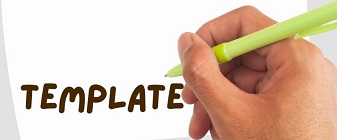Capability Development Efforts of Human Resources in Furniture Industry at Leilem Village Minahasa Regency
(1) Universitas Negeri Manado
(2) Universitas Negeri Manado
(3) Universitas Negeri Manado
(4) Universitas Negeri Manado
(*) Corresponding Author
DOI: https://doi.org/10.26858/ja.v7i2.16179
Abstract
Full Text:
PDFReferences
Arhas, S. H., & Suprianto, S. (2020). The Effectiveness of 6M Implementation at Artebo MSME. Jurnal Ad’ministrare, 6(2), 249–256.
Blaga, P., & Boer, J. (2012). The Influence of Quality Tools in Human Resources Management. Procedia Economics and Finance, 3, 672–680. https://doi.org/https://doi.org/10.1016/S2212-5671(12)00213-4
Blaga, P., & Jozsef, B. (2014). Human Resources, Quality Circles and Innovation. Procedia Economics and Finance, 15, 1458–1462. https://doi.org/https://doi.org/10.1016/S2212-5671(14)00611-X
Eka, P. D. (2020). The Effect of Product Innovation and Product Quality on Consumer Purchase Interests at PT Alfasindo Metal in Jakarta. Jurnal Ad’ministrare, 7(1), 125–132.
Goodall, B. (1987). The Penguin dictionary of human geography. Puffin Books.
Halomoan, Y. K. (2020). The Effect of Training and Work Discipline on Employee Productivity at PT Anugerah Agung in Jakarta. Jurnal Ad’ministrare, 7(1), 57–64.
Jamaluddin, J., Sari, W. I., Akib, H., Kasmita, M., & Tadampali, A. C. T. (2019). The Influence of Spirit at Work on Employee Productivity at PT Millenium Penata Futures Makassar. Pinisi Business Administration Review, 1(1), 11–20.
Jat, M. L., Gathala, M. K., Saharawat, Y. S., Tetarwal, J. P., Gupta, R., & Yadvinder-Singh. (2013). Double no-till and permanent raised beds in maize–wheat rotation of north-western Indo-Gangetic plains of India: Effects on crop yields, water productivity, profitability and soil physical properties. Field Crops Research, 149, 291–299. https://doi.org/https://doi.org/10.1016/j.fcr.2013.04.024
Mousavi, S. H., Monfared, S. Y., & Heidary, A. (2011). Investigating The Relationship Between Life Quality And Productivity In Physical Education Office Employees In Zanjan Province. Procedia - Social and Behavioral Sciences, 15, 3665–3668. https://doi.org/https://doi.org/10.1016/j.sbspro.2011.04.354
Muchdarsyah, S. (2003). Produktivitas apa dan Bagaimana. Bumi Aksara, Jakarta.
Nasrullah, M., Siraj, M. L., & Arhas, S. H. (2020). Intensification of Land and Building Tax Collection in The Barru Regency Revenue Service. 3rd International Conference on Social Sciences (ICSS 2020), 570–573. Atlantis Press.
Nicolau, C., & Foris, T. (2018). Human Resources Crisis: Identifying Future Entrepreneur’s Profile in Romania. Procedia - Social and Behavioral Sciences, 238, 572–581. https://doi.org/https://doi.org/10.1016/j.sbspro.2018.04.037
Sedarmayanti. (2001). SDM dan Produktivitas. Bandung: Mandar Maju.
Siagian, S. P. (2015). Manajemen Sumber Daya Manusia. In Jakarta : Bumi Aksara.
Tjutju Yuniarsih, D. (2013). Manajemen Sumber Daya Manusia Teori, Aplikasi, dan Isu Penelitian. Bandung: Alfabeta.
Verma, S., & Sharma, P. K. (2008). Long-term effects of organics, fertilizers and cropping systems on soil physical productivity evaluated using a single value index (NLWR). Soil and Tillage Research, 98(1), 1–10. https://doi.org/https://doi.org/10.1016/j.still.2007.08.005
Wibowo, B. O. (2010). Sebuah Kebutuhan untuk Meningkatkan Kinerja Jangka Panjang. Jakarta: PT Raja Grafindo Persada.
Article Metrics
Abstract view : 252 times | PDF view : 33 timesRefbacks
- There are currently no refbacks.
Copyright (c) 2020 Kalvin Salindeho Andaria, Xaverius E Lobja, Hermon Maurits Karwur, Recky H. E. Sendouw

This work is licensed under a Creative Commons Attribution-NonCommercial-NoDerivatives 4.0 International License.






























 under a
under a